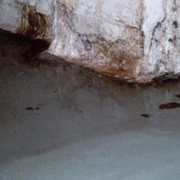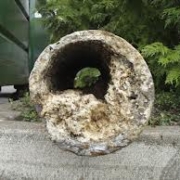Understanding How Waterproofing Systems Protect Your Basement – Marietta, GA
One of the leading culprits in basements is water. This is the main reason why basements are more likely to grow mold than other rooms in a house. Wet basements can also be a sign of foundation problems that needs to be remedied. There are different types of waterproofing systems designed to protect your home.
Before you learn how these systems work, you must first know how and where they are installed in your home. There are two main types of waterproofing systems:
- Interior Waterproofing
- Exterior Waterproofing
Interior waterproofing involves installing a sump pump or waterproof walls to keep water out of the space. Exterior waterproofing consists of adding water-resistant sheeting or tiles around the foundation. A French drain may also be installed to help in the process.
- Sump Pump
- Almost every home with a basement is also equipped with a sump pump. The purpose of this device is to pump out excess water that enters into the space. The water is collected into a special basin, where is it then pumped back outside by the sump pump.
- Waterproof Walls
- By default, walls are not waterproof. Interior systems often rely on plastic sheets or water-resistant paint to keep water out. This type of paint is designed to repel water, and it doesn’t absorb liquid like untreated walls. Waterproofing your walls with paint can be helpful for creating a drier basement environment.
- French Drain
- When water collects around the foundation, it can cause a lot of damage in the long run. If the water has nowhere else to go, then a French drain may be needed to force it to flow elsewhere. This drain consists of a trench with pipes, which is designed to encourage water flow to a different location.
- Waterproof Sheeting
- Water needs to be stopped from the outside before it ever makes it indoors. Adding waterproof sheeting or membrane around the exterior of your home will make it nearly impossible for water to enter. This sheeting is applied around the foundation and other vulnerable areas, and it has a very high success rate.
Exterior waterproofing solutions are often preferred over interior ones. However, they both have their advantages. Be sure to meet with a professional contractor to see which types of waterproofing they recommend for keeping your basement dry. Keeping water out of your basement will protect your home from mold, water damage, and even foundation issues.



